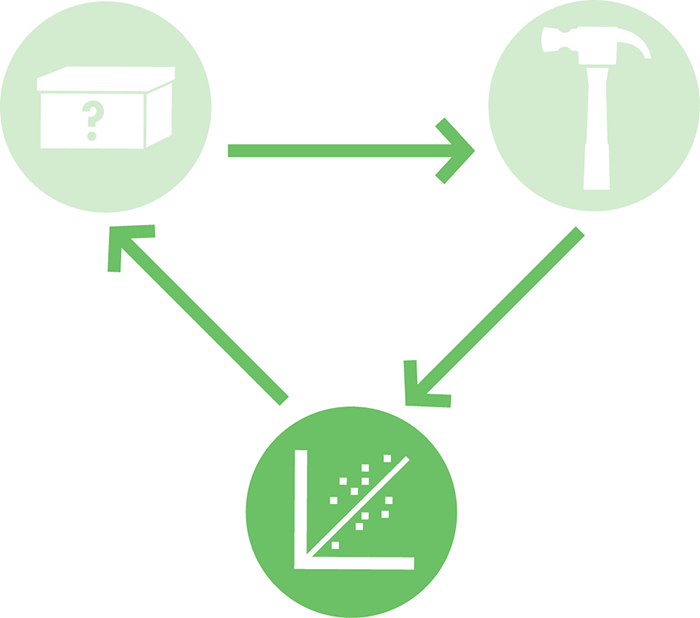Chapter 7. iTune Device

BioBuilder’s iTune Device activity emphasizes the “test” phase of the design-build-test cycle. You will be working with several variants of an enzyme-generating genetic circuit. The circuits have small differences in their DNA sequences, which are expected to change the amount of enzyme the cells produce. You will use an enzymatic assay to quantitatively measure the circuits’ outputs. You will then compare your results with what you would predict based on the known behavior of the slightly different DNA sequences.
For most engineered systems, significant differences between observed and predicted behavior are unacceptable. As is pointed out in Figure 7-1, what would an aeronautical engineer think of a new wing shape which, when added to the body of an airplane, made the plane fly in unexpected ways? Designing and building in the face of such uncertainty would create huge expense and potentially put lives in danger. Engineers would find it nearly impossible to move forward with their designs if the combinations of simple parts—be they nuts and bolts or resistors and amplifiers—gave rise to unexpected behaviors.

Figure 7-1. Unintended behaviors. In modifying the standard tail of an airplane (left) to a novel shape (right), the engineer must be concerned ...
Get BioBuilder now with the O’Reilly learning platform.
O’Reilly members experience books, live events, courses curated by job role, and more from O’Reilly and nearly 200 top publishers.

